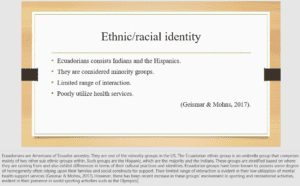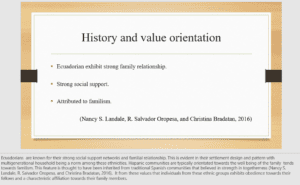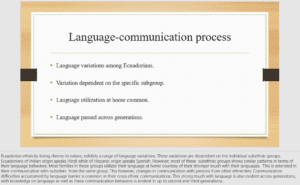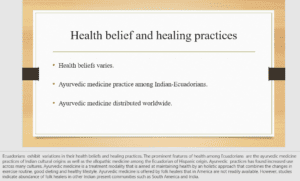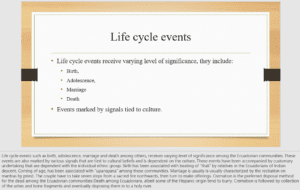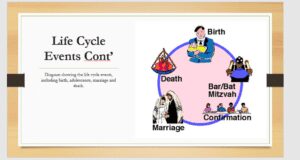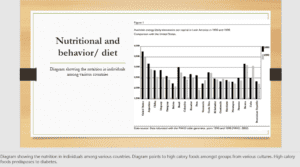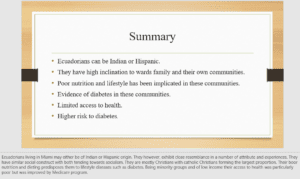Cultural Health Promotion
ORDER A PLAGIARISM-FREE PAPER HERE
We’ll write everything from scratch
Question
In this assignment, students develop a health promotion project for a cultural group living in the United States. Decide if you are completing this assignment alone or in a small group (2-3 students).

Cultural Health Promotion
Students are to sign up for a group whether they will be working individually or in a group. Here are directions on how each student should sign up for the Cultural Project group assignment in Canvas:
https://community.canvaslms.com/docs/DOC-10516-421264913
Select a cultural/ethnic group of interest and obtain approval via the assignment created for topic approval.
You are to learn as much as you can about cultural norms and patterns and how these norms and conventions influence health practices. The purpose of this assignment is for you to develop a deeper understanding and sensitivity regarding the role of culture in patients’ lives and nursing through the examination of a cultural/ethnic group. Adhere to the following guidelines to complete the project.
Each group will prepare and submit a PowerPoint presentation focusing on their approved cultural topic.
The formal presentation will be approximately 15-20 slides long, excluding the title slide and reference slides.
Every group member is expected to be part of the presentation.
Refer to the grading rubric for this assignment. All students in the group will receive the same grade.
Submit the work in the Designated Assignment Drop Box by the Due Date.
Background
What is Cultural Diversity?
Cultural diversity refers to the differences among people based upon shared ideology and valued sets of beliefs, norms, customs, and meanings evidenced in their way of life (ANA, 1996, Position Statement on Cultural Diversity). This diversity is expressed in many ways. Variety in history, beliefs, practices, and opportunities not only exists among the many cultural groups but also typically exists across a wide continuum within the group. Health behaviors are influenced by culture and cultural values as well as by socioeconomic status.
Considerations as you develop your reports.
Health and Culture:
The nurse must recognize that members of various cultures define “health” differently. Individuals may represent themselves or others in their group as healthy even though the nurse identifies symptoms of disease. The cultural priorities of the client may differ from that of the nurse.
Culture and Healing:
Some individuals and families in some cultural groups may also use traditional healing systems, sometimes called lay or folk-healing systems, with or without allopathic (modern) medicine. In addition to seeking help from the nurse as a health care provider, clients may also seek help from traditional or religious healers. Most nurses have experienced clients who combine medical care with prayer. Nurses need to be sensitive to, respectful of, and nonjudgmental regarding patients’ health beliefs and practices in order to maximize patient outcomes.
The health status of all clients is influenced by the interaction of physiological, cultural, psychological, economic, and societal factors. Diversity within and among groups necessitates data collection activities and programs that are tailored to meet the unique healthcare needs of different subgroups.
Health beliefs are translated into health care practices, which then affect health status. What constitutes appropriate care for specific health conditions may be guided by cultural and social class expectations.
Health Literacy and Educational Needs:
Planning health education programs requires identifying and building on cultural strengths that address sensitivity to cultural factors. Meeting the language and cultural needs of each identified minority group, using minority-specific community resources to tailor educational approaches, and developing materials and methods of presentation that are at the academic level of the target population are essential considerations in the planning process. Health programs should be sustainable over a long period and accountable to the people they serve.
Include the following cultural dimensions in your report.
Ethnic/racial identity: How does the group identify itself in terms of ethnicity and racial background? What is the range of interaction outside of the cultural group? Are recreational, educational, and other social activities within the ethnic reference group, the wider community, or both?
History and Value Orientation: How are values derived? What is the historical experience of the group that may have impacted values?
Language-communication process: What languages are spoken in the home? And by whom? What language is preferred when speaking to outsiders? Do second and third generations in the U.S. talk about the language of their grandparents?
Health Beliefs and Practices: What are the traditional health beliefs? How common are these beliefs and practices within this group? To what extent are folk healing practices and practitioners used?
Religious Belief and Spirituality: Religious articles & practices, how spirituality is defined. Remember that Religious Beliefs and Spirituality are different concepts.
Life-cycle events: Which life cycle events are important to the culture? What are the customs associated with births, coming of age, marriage, and death?
Nutritional Behavior/Diet: Are there restrictions? Are there common practices?
Medical health care access and experience: Is access to care and equality of respect an issue for this group? For example, are group members less likely to receive needed care due to system issues such as financial access or provider biases than other groups? (Note: This is a big topic that will be studied in more depth later, but since the interface with health care has had a strong impact on cultural expectations and practices, it will be helpful to begin to examine this aspect of culture in this cultural assessment).
Identify actual or potential health risks among group members.



